IV Infusions
Miami Beach Comprehensive Wellness Center | IV Infusions
MBCWC IV Therapy Options
At the Miami Beach Comprehensive Wellness Center, we offer a variety of IV therapies. We have standard formulas, but our IV bags do not come pre-mixed. Therefore, we can customize any IV therapy for an individual’s specific needs.
IV Formulas
Our Standard IV Vitamin Bag contains the following ingredients
- 500cc 0.45% NaCl (This is also known as “electrolytes.” We may change the concentration of electrolytes based upon your specific medical condition. For example, in cases of low sodium or POTS we can increase the electrolytes. Whereas in cases of dehydration you will need more fluids).
- Vitamin C 5 grams
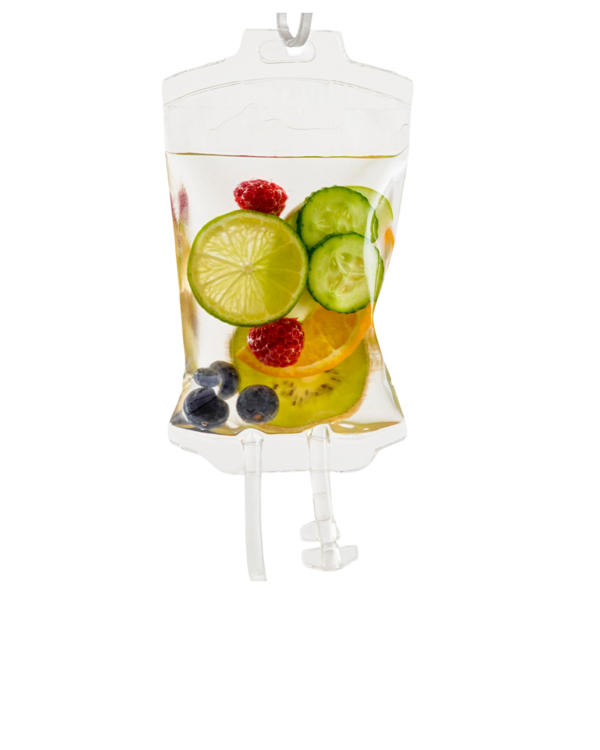
- B-Complex (B1 100mg, B5 2mg, B2 2mg, B6 2mg, B3 100mg)
- Methylcobalamin 5mg
- Magnesium Chloride 1 gram
Add On Ingredients:
Extra Vitamin C
・ May add on additional 5 grams of Vitamin C
・ Doses higher than 10 grams of Vitamin C require specific approval by provider and a documented G6PD lab.
IV Trace Minerals
・ Trace Minerals, 1 cc (Olympia Mineral Blend- Sodium Selenite 8mcg/mL, Magnesium Chloride 80mg, Zinc Sulfate 1mg, Manganese Sulfate 20mcg, Copper Gluconate 0.2mg)
・ Help with acute and chronic viral issues
IV Glutathione Push
・ Glutathione Dose 1 gram
・ Glutathione has the following critical roles in the health of the body¹:
・ Direct chemical neutralization of singlet oxygen, hydroxyl radicals, and superoxide radicals
・ Cofactor for several antioxidant enzymes
・ Regeneration of vitamins C and E
・ Neutralization of free radicals produced by Phase I liver metabolism of chemical toxins
・ One of approximately seven liver Phase II reactions, which conjugate the activated intermediates produced by Phase I to make them water soluble for excretion by the kidneys
・ Transportation of mercury out of cells and the brain
・ Regulation of cellular proliferation and apoptosis
・ Vital to mitochondrial function and maintenance of mitochondrial DNA (mtDNA)
IV Lysine
・ L- Lysine 100mg
・ Lysine is an amino acid. Amino acids are building blocks of protein.
・ Herpes is not just a sexually transmitted disease! There is a whole family of viruses called “Herpesviridae” or “herpes viruses.” This family of viruses includes: A. Herpes Simplex Virus type 1 (HSV-1) B. Herpes Simplex Virus type 2 (HSV-2), C. Cytomegalovirus/CMV, D. Epstein-Barr Virus/EBV, which is also called Mononucleosis or “Mono”, E. Human Herpes Virus type 6/HHV-6, F. “Chickenpox” which is also called Herpes Zoster Varicella Virus or “Shingles.” Lysine has been found to inhibit the reproduction of the whole family of herpes viruses.
・ Lysine helps the body absorb calcium and reduces the amount of calcium that is lost in urine. Since calcium is crucial for bone health, some researchers think lysine may help prevent bone loss associated with osteoporosis.
・ Athletes sometimes use lysine as a supplement. Some studies suggest lysine helps muscle tissue recover after the physical stress of exercise.
・ Some scientific studies suggests that L-lysine may have anxiety-reducing effects by reducing serotonin breakdown and by increasing GABA-receptor activity. GABA is considered the “neurotransmitter breaks of the nervous system.” GABA helps to calm down excited nerves in the brain and the peripheral nerves, helping to reduce calmness, better sleep and ability to go into meditative states.
IV L-Taurine
・ L- Taurine Dose is 100mg
・ Taurine is an amino acid.
・ Taurine is the most abundant intracellular sulphur-containing amino acid. High concentrations of taurine are found in the heart and retina, whereas smaller amounts are found in the brain, kidneys, intestine and skeletal muscle. It is now well established that taurine is involved in many diverse biological and physiological functions, including²:
・ Gallbladder health: Taurine plays a role in bile salt formation and fat digestion
・ Mental Health: deficiency of taurine is associated with anxiety, epilepsy, hyperactivity and depression; taurine supplementation can relieve these symptoms
・ Supporting the treatment of alcohol overuse, fatigue
・ Muscular pain: helpful for the treatment of muscle spasms
・ Visual Health: has also been reported to protect visual function during diabetes
・ Immune Function: improves immunocompetence
・ Helps with Elevated Toxic Burden: exerts anti-neurotoxic effects
・ Inflammation: has anti-inflammatory effects
・ Cancer support: helps in the inhibition of tumor cell proliferation
IV L-Carnitine
・ L-Carnitine 1,000mg
・ Uses of Carnitine:
・ Improved energy production: Carnitine plays a critical role in energy production. It is an essential cofactor that helps transport long-chain fatty acids into the mitochondria so that they can be oxidized to produce energy in the form of adenosine triphosphate (ATP). Carnitine also helps transport some toxic compounds out of the mitochondria.
・ Cognition: Carnitine helps to support acetylcholine synthesis, which is used in the brain and nerves
・ Burning fat, not muscle, weight loss: Carnitine plays a role in transporting long-chain fatty acids in the myocardial mitochondria, where they are metabolized via oxidation for energy
・ Male fertility: Carnitine has a role in sperm maturation, sperm motility, and spermatogenesis
・ Menstrual regulation: Carnitine helps to regulate the menstrual cycle in women with PCOS (polycystic ovarian syndrome)
・ Anti-inflammatory: Helps to reduce levels of C-reactive protein, a biomarker of systemic inflammation

IV Phosphatidylcholine (PC)
・ Phosphatidylcholine (PC) is a phospholipid, a phosphate group molecularly combined with a lipid. These molecules make up the cell membranes. Functionally, PC enhances the free passage of nutrients into the cell while escorting waste and detritus out. By doing so, it works to enhance the process of the metabolism within a cell.
・ Uses of Phosphatidylcholine:
・ Cognition and Nerve Health:
・ The brain itself is 60% lipids and maintaining the right balance of phospholipids in neuronal cellular membranes is critical for brain functioning. Healthy cell membranes allow nerve impulses to fire correctly.
・ PC as a source of choline to produce acetylcholine, one of the most abundant neurotransmitters in the brain, contribute to maintaining brain health.
・ Mitochondrial health:
・ PC is also the most abundant phospholipid in the mitochondrial membrane.
・ Cardiovascular health:
・ PC helps with healthy cholesterol balance, as it helps to increase HDL’s ability to remove LDL from the blood; there it may help with atherosclerosis.
・ Helps to rebuild cellular function after mold toxicity:
・ Mycotoxins from mold can cause chronic inflammation, which then compromises the phospholipid bilayer of cells membranes. This can cause vulnerability in your cells, including brain and nerve cells. PC may help neuropsychiatric symptoms.
・ PC is also a key component in liver health. It is one of the primary ingredients of bile, which helps us break down and digest fats.
・ Healthy Barriers in the Gastrointestinal Tract:
・ PC makes up 90% of the phospholipids in the intestinal mucosa, the mucus layer in the gut that protects the body from pathogens. Phosphatidylcholine is helpful in inflammatory bowel disease, leaky gut and various gastrointestinal issues.
・ Possible short-term effects of IV Phosphatidylcholine:
・ Hypoglycemia (low blood sugar) may occur up to several hours AFTER the infusion is completed. Symptoms of hypoglycemia might include: shaking, tremor, irritability, anxiety, dizziness or unexpected hunger. The treatment for this is to eat healthy carbohydrates and hydrate well to correct this.
・ Flushing of the gall bladder can occur when IV phosphatidylcholine is administered. Some people experience right upper quadrant abdominal pain/discomfort or right shoulder pain/discomfort or nausea during the IV therapy. If the you experience these symptoms, just let us know and we will slow the rate of IV to manage this side effect. This side effect is temporary, normal and will improve after infusion finishes.
・ Our dosing options
・ Single Dose = 350mg
・ Double Dose = 700mg
・ Triple Dose = 1050mg
・ Quadruple Dose = 1400mg
IV Alpha Lipoic Acid (ALA)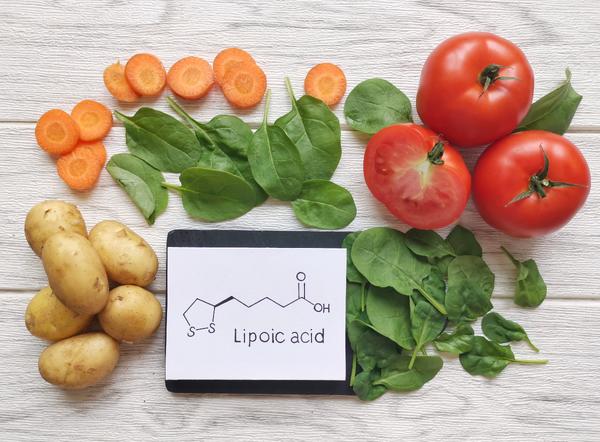
・ ALA has recently gained a reputation as an antioxidant³. In its reduced form, it reacts and neutralizes Reactive Oxygen Species (ROS), such as superoxide radicals, singlet oxygen, and hydroxyl radicals. Thus, it is extremely beneficial in several oxidative-stress-associated conditions such as ischemia-reperfusion (cardiovascular disease or strokes) or radiation injury.
・ Numerous studies have strongly supported the role of ALA in treating diabetic neuropathy. It does so by enhancing nitric oxide-mediated endothelium-dependent vasodilation, thus improving microcirculation in patients with diabetic polyneuropathy. We have also observed that it helps other types of neuropathy in our clinic, however more scientific studies are needed.
・ ALA possesses an excellent iron-chelation property. The thiol groups in ALA are responsible for chelating iron. By increasing the glutathione levels inside the cells, ALA improves the excretion of various toxins, especially toxic metals, in the body. Lipoic acid preferentially binds to Zn, Pb, and Cu. On the other hand, dihydrolipoate forms complexes with Fe, Zn, Hg, Pb, and Cu.
・ We have seen alpha lipoic acid help with some cases of skin hyperpigmentation, especially after exogenous hormone exposure.
・ Alpha Lipoic Acid is contraindicated in:
・ If you have consumed large amounts of alcohol within the past 24 hours
・ Fasting or strict ketogenic diet with a low blood sugar (ALA will drop the blood sugar further)
・ Thiamine (Vitamin B1) deficiency.
・ Patients receiving IV Alpha Lipoic Acid should be taking B-Complex (oral supplementation is sufficient).
・ Alpha Lipoic Acid may lower blood sugar, so make sure that you’ve eaten prior to receiving the IV to prevent hypoglycemia (low blood sugar). Make sure to eat a snack after receiving the IV therapy.
・ Also, the urine can smell bad and metallic after receiving ALA. This is normal and it is a normal part of the detox process.
・ Our dosing options
・ Single Dose = 150mg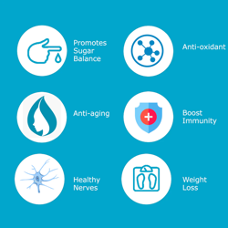
・ Double Dose = 300mg
IV Methylene Blue
・ Methylene blue is not a true antibiotic, however it has anti-septic (anti-bacterial) properties and anti-viral effects. Because it is not a true antibiotics, it doesn’t wreak havoc on the gut microbiome the way that actual antibiotics do. It is being used by many healthcare practitioners to help to reduce the infectious burden in chronic stealth infections, such as Borreliosis (Lyme)⁴, Bartonellosis⁵, and chronic/long COVID⁶. Methylene blue is the precursor molecule to hydroxychloroquine. Hydroxychloroquine has been used successfully long-term to treat autoimmune diseases, such as Lupus. Because methylene blue is the precursor molecule, we are seeing some help in reduction of autoimmune symptoms in some patients.
・ Methylene blue works by directly increasing mitochondrial respiration through its interactions with the electron transport chain. This is how your body produces ATP, through oxidative phosphorylation. ATP is commonly called the molecule of “energic currency” in biological systems. Because methylene blue helps to restore mitochondrial function, it may help with chronic fatigue, especially if part of the fatigue is secondary to elevated toxic burden affecting the functioning of the mitochondria.
・ Methylene Blue is used off label (meaning that it is not-FDA approved) to help with neuro-cognitive function. Some of the uses include:
・ Help with mood disorders, such as depression and bipolar spectrums
・ Help with focus, with symptoms of ADHD
・ Help with poor memory, brain fog and beginning stages of Alzheimer’s
・ If you would like to take a deeper dive into reading about Methylene Blue, there is a good layman’s book called “The Ultimate Guide to Methylene Blue” by Mark Sloan. It is available for instant download on ebook websites. https://www.goodreads.com/book/show/60051999-the-ultimate-guide-to-methylene-blue
・ Methylene Blue can make your urine SMURF-BLUE. This is a normal effect and this is a healthy indication that the medication is systemic.
・ In order to safely take Methylene Blue, you must do the following:
・ Have documentation of a blood test called G6PD (glucose-6-phosphate dehydrogenase deficiency). This is a rare genetic problem, but if you have this issue and you use methylene blue, you are at risk for hemolytic anemia (rupture of red blood cells). We cannot administer Methylene Blue without this test.
・ Methylene Blue should NOT be taken with most mental health medications, some neuropathy medications, opioid pain medications, and some migraine medications. Please let us know if you are taking any medications, so that we can avoid any sort of drug interaction.
・ Avoid breast feeding
・ Avoid methylene blue if you are taking 5HTP or St John’s Wort or GABA
・ Our dosing options:
・ Methylene Blue 10mg
・ Methylene Blue 20mg
IV Nicotinamide adenine dinucleotide (NAD+) 4 Hour Infusion
・ Nicotinamide adenine dinucleotide (NAD+) is an essential pyridine nucleotide that is present in all living cells. NAD+ acts as an important cofactor and substrate for a multitude of biological processes including energy production, DNA repair, gene expression, calcium-dependent secondary messenger signaling and immunoregulatory roles.
・ Therapuetic uses of NAD+
・ Anti-aging: Recent studies have shown that raising intracellular NAD+ levels represents a promising therapeutic strategy for age-associated degenerative diseases in general and to extend lifespan⁷.
・ Sobriety and Satiety: components of NAD+ metabolism and NAD-dependent enzymes can influence major signaling processes associated with the neurobiology of addiction. NAD+ may have benefits as an anti-addiction intervention.⁸ This includes substances, such as opioids, marijuana, alcohol, nicotine, caffeine, food addictions, internet or video game and gambling addictions.
・ Brain and Cognition: shows anti-inflammatory and anti-oxidant effects in many neurodegenerative disease models.
・ Irregular sleep patterns: NAD can help with chronic fatigue and it helps to reset the circadian rhythm back into a normal healthy rhythm.⁹
・ Mitochondrial Dysfunction Secondary to Chronic Fatigue Syndrome, Lyme, Mold Toxicity and Long-COVID-19: mitochondrial dysfunction has been increasingly recognized as a contributing factor to chronic fatigue syndrome, fibromyalgia, chronic Lyme, mold toxicity and long COVID-19. NAD+ is a central metabolic coenzyme/cosubstrate involved in cellular energy metabolism and energy production that takes place in the mitochondria.¹⁰
・ What you need to know about NAD+ IV Therapy:
・ Our standard recommendation is to receive 3 sessions of NAD 500mg IV therapies within 10-14 days.
・ A normal side effect is that it can make you feel nauseous and queasy while the IV therapy is running. This is common and normal. One thing that we have found that paradoxically seems to help prevent the nausea is to SNACK LIGHTLY DURING THE ENTIRE IV SESSION. Strange, but it seems to make a big difference! Please bring snacks to munch on while receiving your IV therapy.
・ NAD increases metabolic rate and may induce many unpleasant symptoms during infusion. These include: muscle aches, abdominal pain, chest pain/pressure or a sensation of palpitations, dizziness, nausea and headache. Side effects will improve shortly after stopping infusion and by slowing down the rate of infusion.
・ Some people are very sensitive to the effects of NAD+, so we plan on running the IV slowly. Other people have no side effects, so we can run the IV faster. How fast we run the IV depends upon how the individual person tolerates it that day. Sometimes it can take 4 hours, while other individuals can finish the IV in about 90 minutes. Plan on being here for 4 hours for the first time.
・ Our dosing options:
・ NAD Single Dose = 500mg, Given over a 90minute to 4 hour period
・ IV Vitamin Bag, Glutathione Push and Methylene Blue are acceptable add-on’s following IV NAD. Some patients find a better response if they add on one of these infusions immediately following NAD.
・ This image comes from a research article titled “Therapeutic Potential of NAD-Boosting Molecules: The In Vivo Evidence.”¹¹
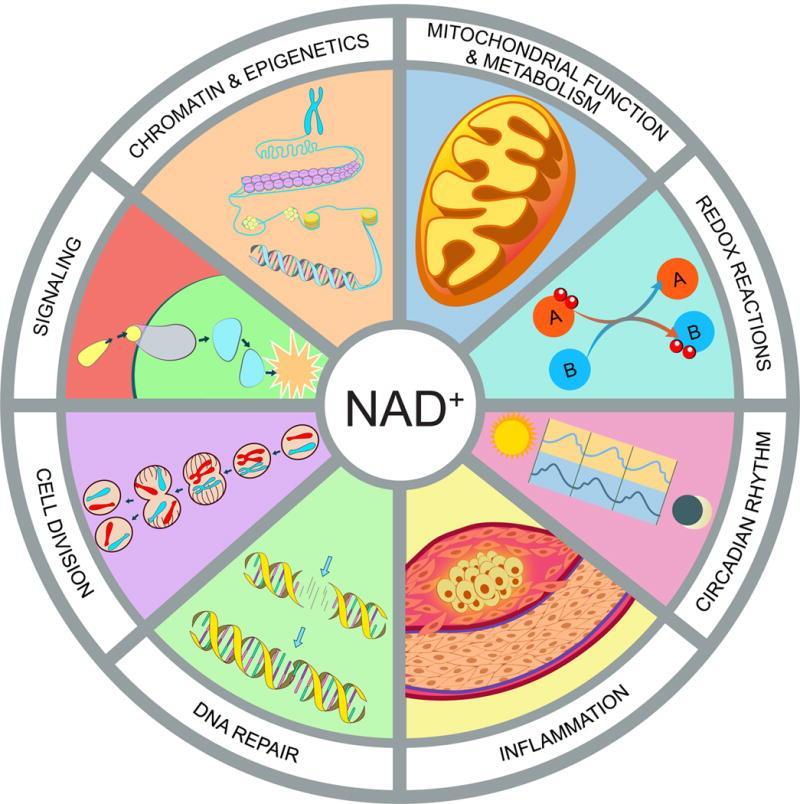
IV EDTA Chelation 2 Hour Infusion
・ Chelation therapy is a conventional medicine method for removing heavy metals, such as mercury or lead from blood.
・ Uses of Chelation Therapy:
・ Heavy Metal Toxicity: It’s one of the standard treatments for many types of metal poisoning. Some chelators are better at removing certain metals than others are. Chelators work by binding to metals in the bloodstream. Once they’re injected into the bloodstream, they circulate through the blood, binding to metals. In this way, chelators collect all the heavy metals into a compound that’s filtered through the kidneys and released in urine.Chelation therapy is a very effective way to remove several heavy metals from blood, including: lead, arsenic, mercury, iron, copper, nickel.
・ Cardiovascular Disease: TACT¹² was a double-blind, placebo-controlled trial where patients were randomized to receive either intravenous disodium EDTA chelation therapy or a placebo transfusion, and additionally a high dose oral vitamin and mineral regimen or an oral placebo. Chelation therapy for stable patients with a history of MI showed modest improvement in the reduction of non-fatal cardiovascular events. The chelation regimen of 40 infusions of disodium EDTA, ascorbate (vitamin C), B vitamins, and other components resulted in a modest reduction in a composite outcome of cardiovascular events. Chelation is NOT an FDA-approved treatment for cardiovascular disease, although there is scientific evidence that it can help to prevent poor cardiovascular ourcomes, such as heart attacks and strokes.
・ In order to receive IV chelation at our office, you must first have a functional medicine consultation and the appropriate heavy metal toxicity testing, blood work or cardiovascular testing, as determined by the physician.
・ You must have liver enzymes and renal function checked every 4th IV therapy.
・ The dose of IV chelation is calculated by the physician based upon your body weight and most recent lab studies.
・ Many clients may require up to 40 IV therapies to remove heavy metals. EBOO (ozone dialysis) is thought to speed up this process, so that less chelation therapies are needed.
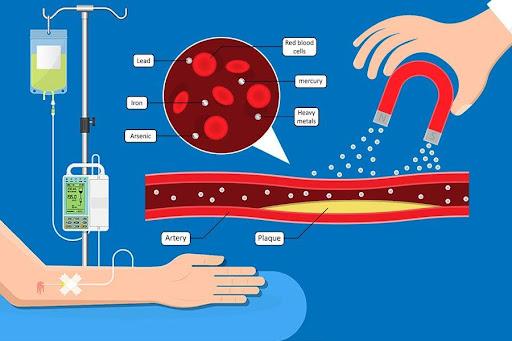
IV High Dose Vitamin C
・ Mounting evidence indicates that vitamin C has the potential to be a potent anti-cancer agent when administered intravenously and in high doses (high-dose IVC). Early phase clinical trials have confirmed safety and indicated efficacy of high-dose IV Vitamin C in eradicating tumour cells of various cancer types.¹³
・ IV high-dose vitamin C is not-FDA approved to diagnose or treat any type of cancer. The statements made regarding these products have not been evaluated by the Food and Drug Administration. The efficacy of these products has not been confirmed by FDA-approved research. These products are not intended to diagnose, treat, cure or prevent any disease.
・ There are no set amounts of treatments. The amount and strength of the Vitamin C used is based upon the clinical judgment of a trained physician. Results vary from patient to patient. Each individual is unique, as are their medical needs. No prescriptions or treatments will be given unless a clinical need exists based on an examination by the physician.
・ IV High-dose Vitamin C has been investigated in the following types of cancers and results vary from person to person:
・ Leukemia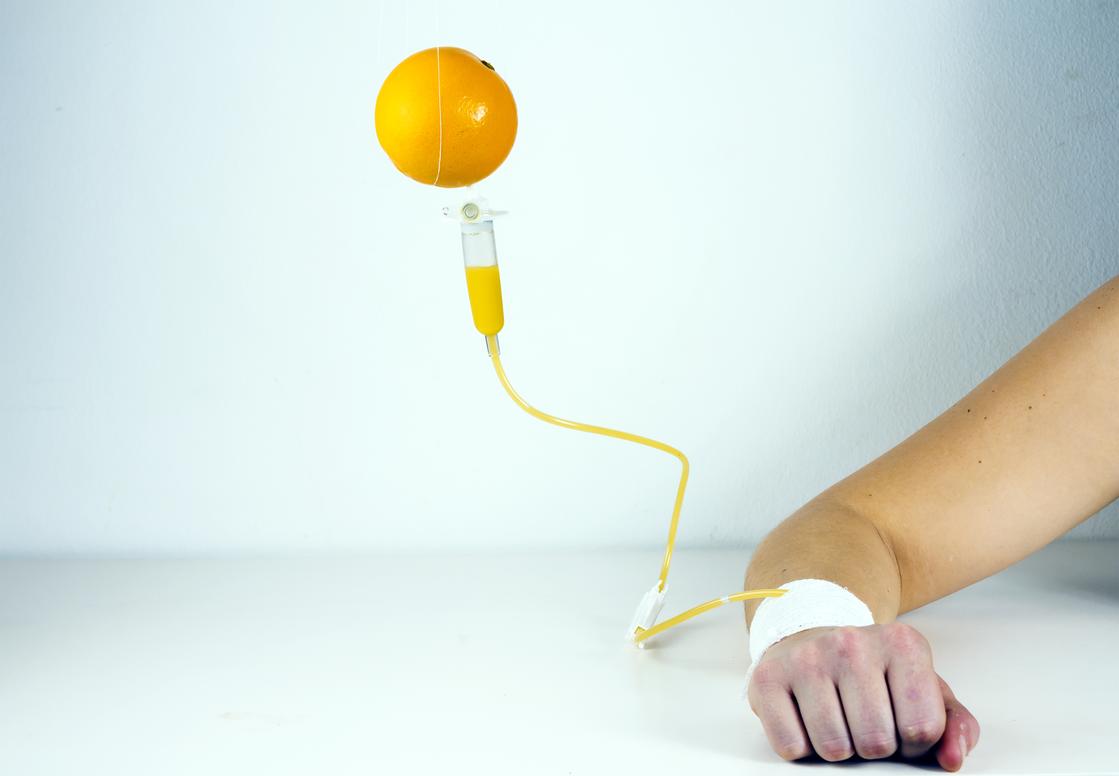
・ colon cancer
・ melanoma
・ pancreatic cancer
・ non-small-cell lung cancer (NSCLC)
・ breast cancer
・ ovarian cancer
・ prostate cancer
・ hepatocellular carcinoma
・ malignant mesothelioma
・ thyroid cancer
・ oral squamous cell carcinoma
・ neuroblastoma
・ glioma
・ glioblastoma multiform (GBM)
・ In order to receive IV high-dose vitamin C at our office, you must first have a medical consultation and the appropriate G6PD lab testing and other necessary blood work.
・ Vitamin C may effect insulin readings: It has been discovered that high dose intravenous Vitamin C, at 15 grams or higher, may cause a “false positive” on various finger stick blood glucose strips read on a “meter.” This is of major importance in a cancer patient receiving this treatment if the patient has diabetes. Please speak to the physician before administering insulin, as you might not need it.
IV Medications
・ Ondansetron / “Zofran”
・ This is an anti-nausea medication.
・ Ketorolac
・ This is a non-steroidal anti-inflammatory medication.
・ It helps with relief of pain.
・ This medication should be used with caution in patients with renal impairment.
¹ Pizzorno J. Glutathione! Integr Med (Encinitas). 2014 Feb;13(1):8-12. PMID: 26770075; PMCID: PMC4684116.
² Xu YJ, Arneja AS, Tappia PS, Dhalla NS. The potential health benefits of taurine in cardiovascular disease. Exp Clin Cardiol. 2008 Summer;13(2):57-65. PMID: 19343117; PMCID: PMC2586397.
³ Nguyen H, Gupta V. Alpha-Lipoic Acid. [Updated 2022 Sep 26]. In: StatPearls [Internet]. Treasure Island (FL): StatPearls Publishing; 2023 Jan-. Available from: https://www.ncbi.nlm.nih.gov/books/NBK564301/
⁴ Feng J, Weitner M, Shi W, Zhang S, Sullivan D, Zhang Y. Identification of Additional Anti-Persister Activity against Borrelia burgdorferi from an FDA Drug Library. Antibiotics (Basel). 2015 Sep 16;4(3):397-410. doi: 10.3390/antibiotics4030397. PMID: 27025631; PMCID: PMC4790293.
⁵ Zheng X, Ma X, Li T, Shi W, Zhang Y. Effect of different drugs and drug combinations on killing stationary phase and biofilms recovered cells of Bartonella henselae in vitro. BMC Microbiol. 2020 Apr 10;20(1):87. doi: 10.1186/s12866-020-01777-9. PMID: 32276590; PMCID: PMC7149919.
⁶ Cagno V, Medaglia C, Cerny A, Cerny T, Zwygart AC, Cerny E, Tapparel C. Methylene Blue has a potent antiviral activity against SARS-CoV-2 and H1N1 influenza virus in the absence of UV-activation in vitro. Sci Rep. 2021 Jul 12;11(1):14295. doi: 10.1038/s41598-021-92481-9. PMID: 34253743; PMCID: PMC8275569.
⁷ Braidy N, Liu Y. NAD+ therapy in age-related degenerative disorders: A benefit/risk analysis. Exp Gerontol. 2020 Apr;132:110831. doi: 10.1016/j.exger.2020.110831. Epub 2020 Jan 7. PMID: 31917996.
⁸ Braidy N, Villalva MD, van Eeden S. Sobriety and Satiety: Is NAD+ the Answer? Antioxidants (Basel). 2020 May 14;9(5):425. doi: 10.3390/antiox9050425. PMID: 32423100; PMCID: PMC7278809.
⁹ Yasukazu Nakahata, Yasumasa Bessho, "The Circadian NAD+ Metabolism: Impact on Chromatin Remodeling and Aging", BioMed Research International, vol. 2016, Article ID 3208429, 7 pages, 2016. https://doi.org/10.1155/2016/3208429
¹⁰ Li W, Sauve AA. NAD⁺ content and its role in mitochondria. Methods Mol Biol. 2015;1241:39-48. doi: 10.1007/978-1-4939-1875-1_4. PMID: 25308486.
¹¹ Rajman L, Chwalek K, Sinclair DA. Therapeutic Potential of NAD-Boosting Molecules: The In Vivo Evidence. Cell Metab. 2018 Mar 6;27(3):529-547. doi: 10.1016/j.cmet.2018.02.011. PMID: 29514064; PMCID: PMC6342515.
¹² Lamas GA, Goertz C, Boineau R, et al. Effect of Disodium EDTA Chelation Regimen on Cardiovascular Events in Patients With Previous Myocardial Infarction: The TACT Randomized Trial. JAMA. 2013;309(12):1241–1250. doi:10.1001/jama.2013.2107
¹³ Böttger F, Vallés-Martí A, Cahn L, Jimenez CR. High-dose intravenous vitamin C, a promising multi-targeting agent in the treatment of cancer. J Exp Clin Cancer Res. 2021 Oct 30;40(1):343. doi: 10.1186/s13046-021-02134-y. PMID: 34717701; PMCID: PMC8557029.
Website Disclaimer:
The website is for educational/informational purposes and should not be construed as a substitute for a doctor-patient relationship.
The contents of this website, such as text, graphics, images, and other material contained on this website (“Content”) are for informational and educational purposes only. The Content is not a substitute for professional medical advice, diagnosis, or treatment. Always seek the advice of your physician or other qualified health provider with any questions you may have regarding a medical condition. Never disregard professional medical advice or delay in seeking it because of something you have read on this website. Health-related information changes frequently and, therefore, the Content on this website may be outdated, incomplete or incorrect. We do not assume any liability for the information contained or referenced within this website and make no warranties, nor express or implied representations whatsoever regarding the accuracy, completeness, timeliness, or usefulness of any information contained or referenced in this website.
No prescriptions or treatments will be given or recommended unless a clinical need exists based on a medical examination by our medical healthcare practitioners. We cannot give medical advice without establishing a medical relationship. A consultation is required for any medical advice.
Any review or other material that could be regarded as a testimonial or endorsement does not constitute a guarantee, warranty, or prediction regarding the outcome of any consultation. Results vary from patient to patient. The testimonials associated with this website represent the anecdotal experience of individual consumers.


